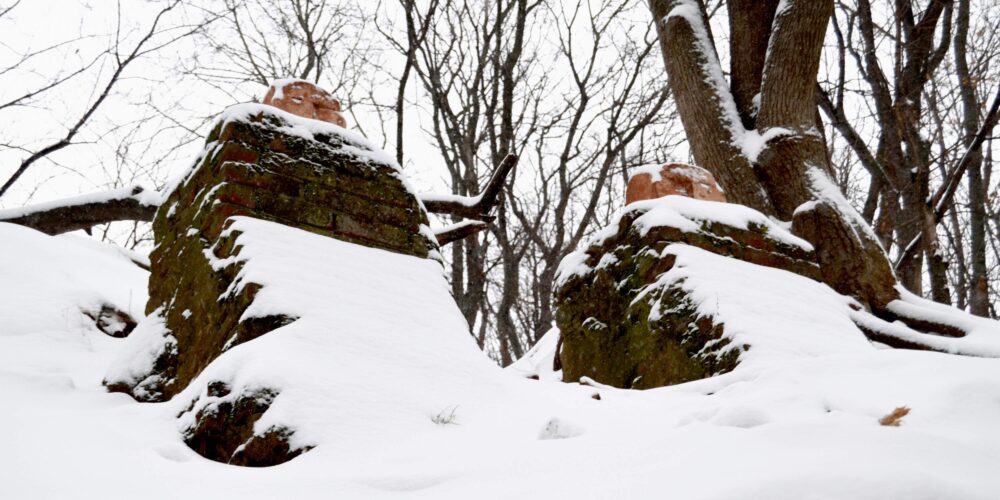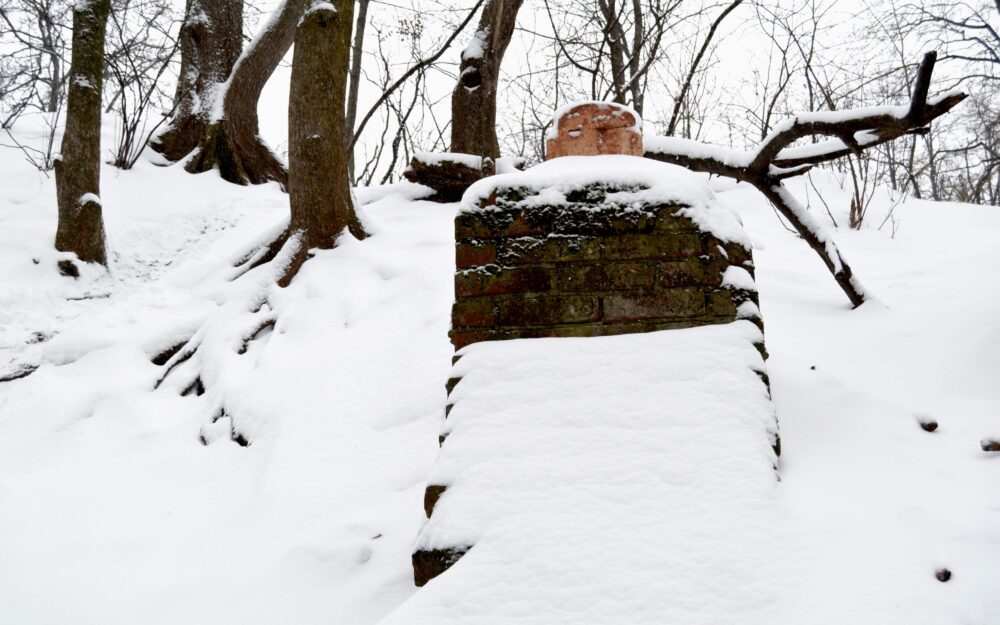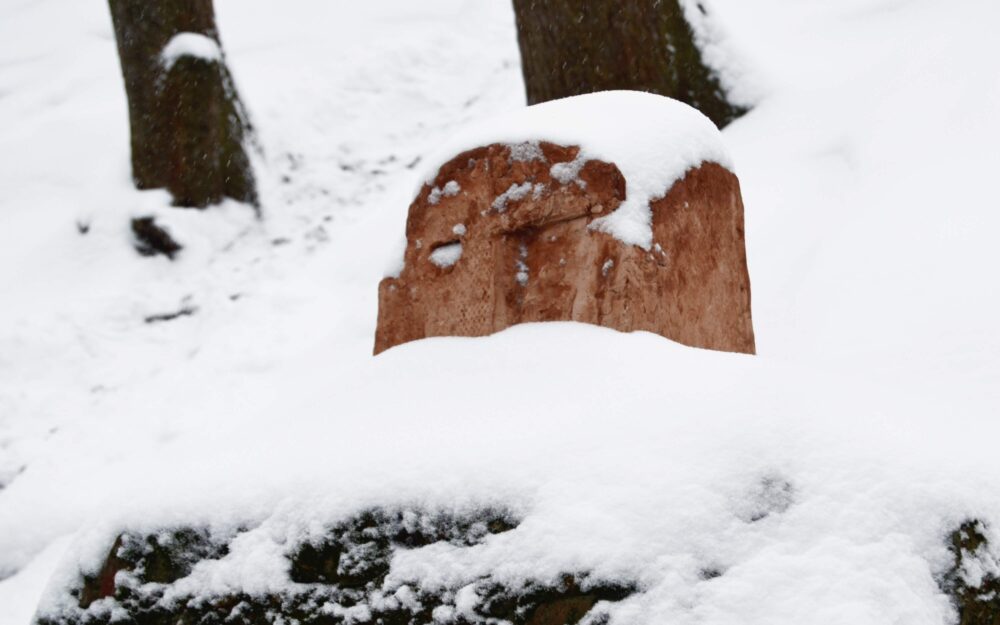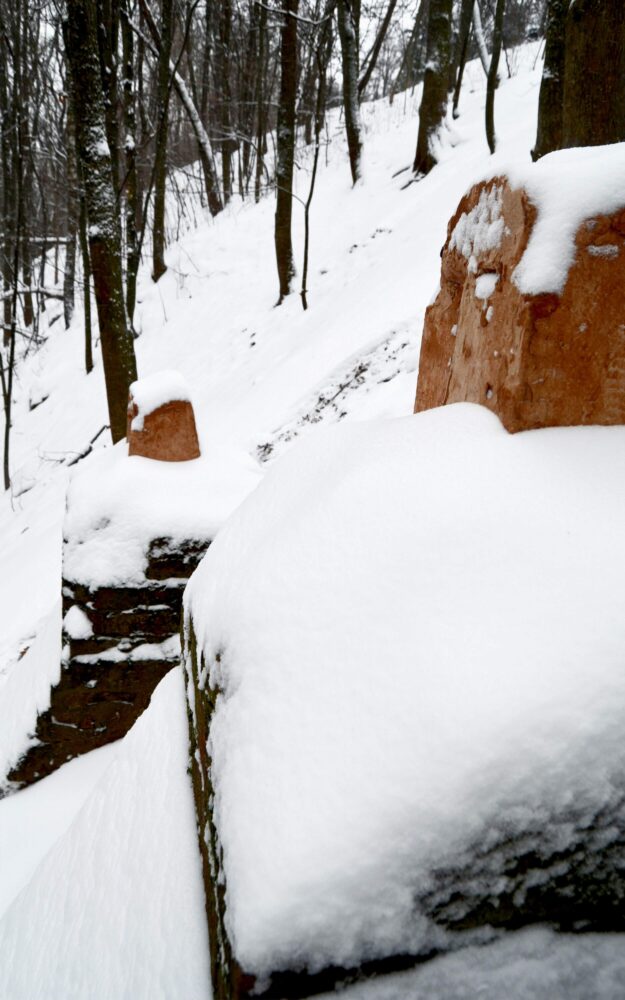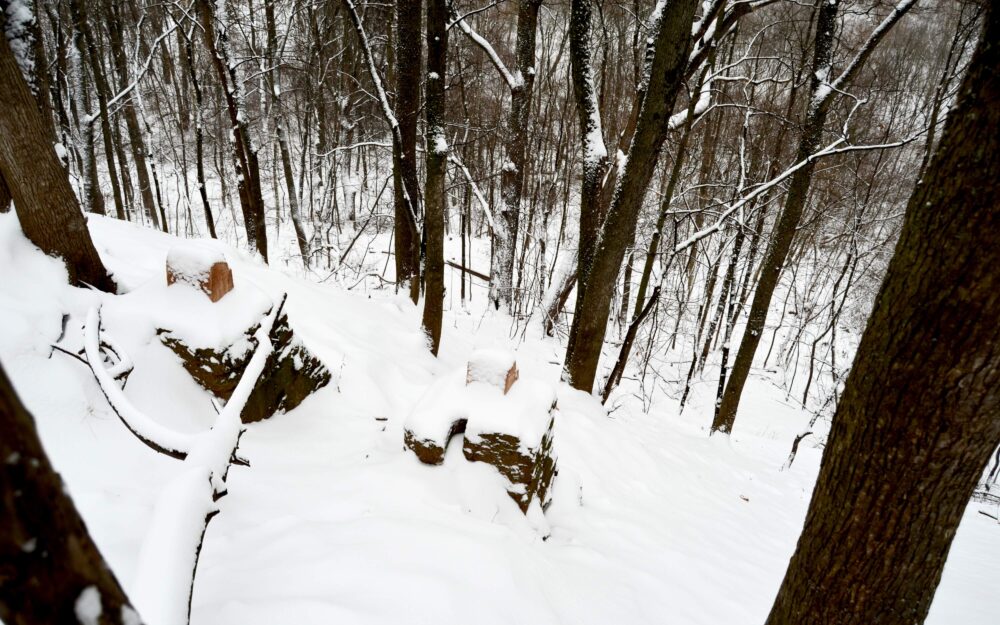Gods in pagan religions are usually associated with a specific habitat, location where they accept sacrifices from humans and thus continue to exist. However, the abandonment of the place by humans makes Gods homeless and forsaken. Due to this, Gods are forced to leave their home and go in search of a new habitat. This is how they find in the forest the ruins of an old sanctuary — which becomes an installation site.
The shape of the ruins invokes the structure of the ritual pyramids of the Maya people of pre-Columbian America, down whose steps, once, flowed the blood from the sacrifices to the local Gods, performed in the temple above. However, those pyramids have long been abandoned by people and buried to oblivion and disappearance — a state of shapelessness.
Now, the homeless Gods are trying to find their home and take up residence on top of similar ruins. According to the divine principle of place, they acquire its nature — they receive their bodies from local stone and clay, while rain and time act as agents of shapelessness. The rain erodes the shape of the Gods — unfired clay — and the divine matter flows down the steps of the disappearing temple. This matter also flows from their eyes, revealing existentialist horror and tears of the greatest loneliness of all: the loneliness of an abandoned God. The weeping Gods pass away with time, and over time they turn into the void essence of the ruins.
Their shapelessness will eventually turn into the water, reviving the ancient philosopheme of Thales that everything actually is water.[1]
Thus, settling in an empty temple turns Gods into a sacrifice by themselves to themselves. Acquisition of a habitat, contrary to their intention, transforms them into a state of absence of the boundaries, in which they disappear into the dialectical voidness of this event, blurring and flowing-into[2] a state that embodies another philosopheme of Thales: everything is full of Gods.[3]
The location of this land-art is the foundation of a pre-Revolution building in one of the Moscow forests, whose ruined brickwork emerges from the ground like two stairs-pedestals. Being inside the Moscow forest park, the sculptures remain hidden from the eyes of casual passers-by. Only chance can help find them.
In the landscape, clay Gods begin their independent existence and the path of metamorphosis to formlessness and void, echoing the nature of snow, rain and wind. The heads of the Gods, created from unfired clay, will completely dissolve and disappear over time, merging with the ecology of the forest.
References
| ↑1. | Thales 12 A 12 Diels-Krantz; Arist. Met. 983b20–27: “Thales […] says the permanent entity is water (which is why he also propounded that the earth floats on water). Presumably he derived this assumption from seeing that the nutriment of everything is moist, and that heat itself is generated from moisture and depends upon it for its existence (and that from which a thing is generated is always its first principle). He derived his assumption, then, from this; and also from the fact that the seeds of everything have a moist nature, whereas water is the first principle of the nature of moist things” (Aristotle 1933, 1989. Aristotle in 23 Volumes, Vols. 17, 18. Trans. by H. Tredennick. Cambridge, MA: Harvard University Press; London: Heinemann). |
|---|---|
| ↑2. | The title of this artwork (“Flowing-out-from”) reads as “pro-is-tekanie” in Russian. This word literary means “origin” or “originating”, but derives from the root “tech’”, which means “to flow”. |
| ↑3. | Thales 12 A 1 Diels-Krantz; DL I.27; Diogenes Laertius. 1925. Lives of Eminent Philosophers (Loeb Classical Library). Trans by R.D. Hicks. Cambridge, MA: Harvard University Press. Vol. 1. P. 27: “His doctrine was that water is the universal primary substance, and that the world is animate [empsychos — M.-S. Zh.] and full of divinities [daimones — M.-S. Zh.]]”. |
